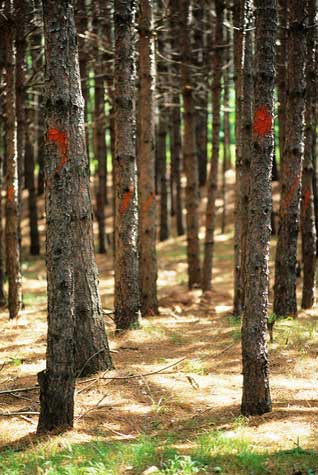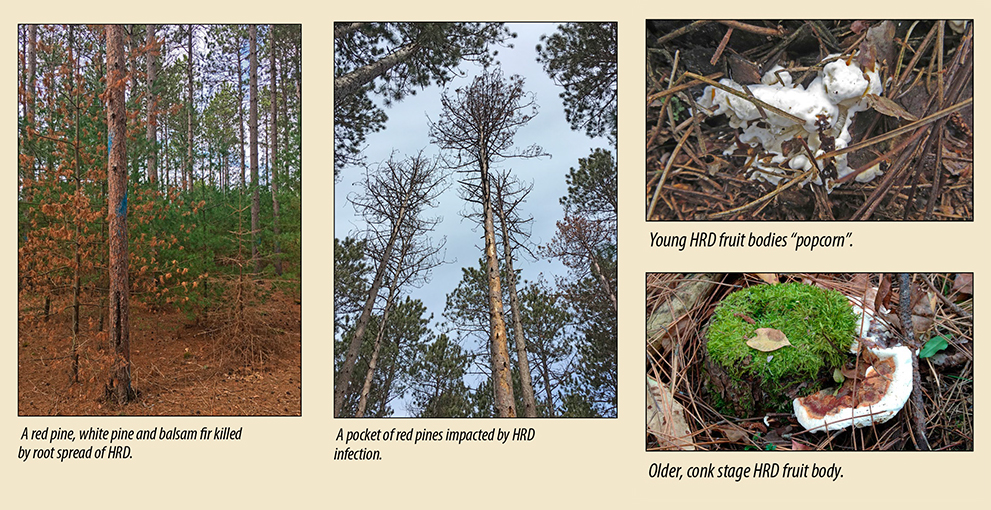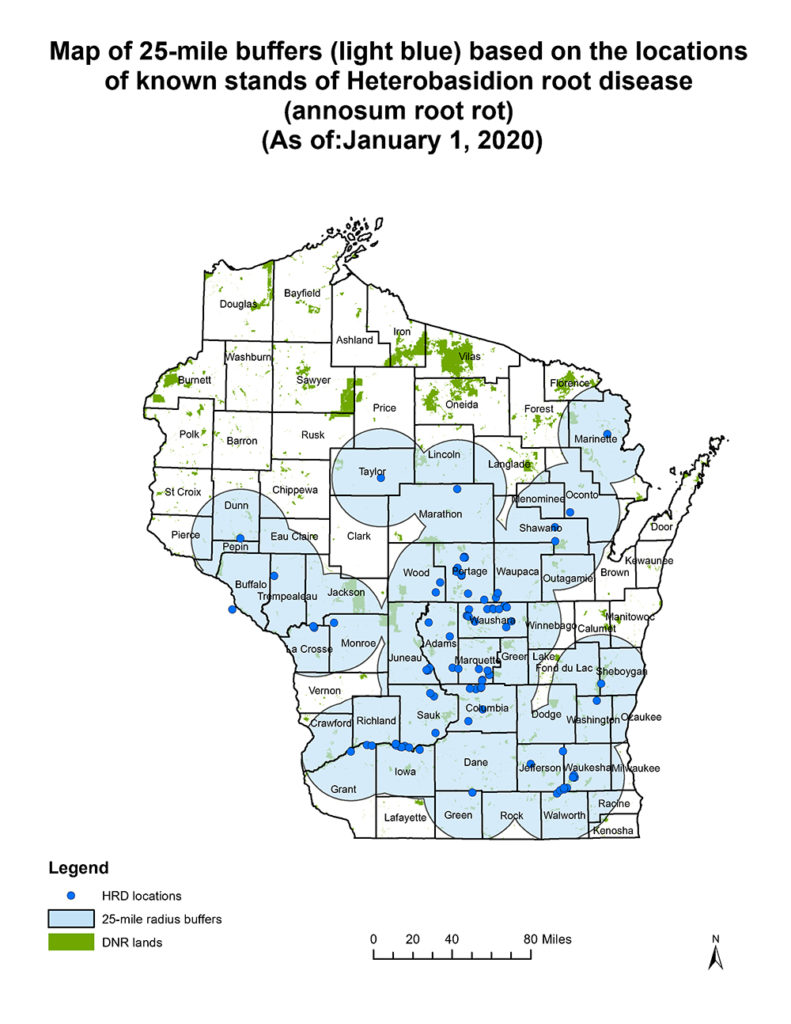
Your Trees at Risk: Heterobasidion Root Disease (HRD)
Beware! If you are a woodland owner of pine and spruce stands, and you anticipate harvesting or thinning, now is the time to understand the hazards of a dangerous fungal tree disease and take preventive measures. If you have recently completed a pine or spruce thinning, be on the lookout for telltale signs of potential ongoing degradation to your remaining trees!

Heterobasidion root disease or HRD, is one of the most destructive diseases affecting conifers in the Northern Hemisphere. In Wisconsin, HRD is most common in pine and spruce plantations. Infection by the Heterobasidion irregulare fungus causes wood decay and kills living tissues, resulting in growth loss and tree mortality. The fungus enters a stand when fungal spores land on freshly cut stumps, often after a timber harvest or thinning. Following initial stump infection, the disease spreads via root contact and creates pockets of dead and dying trees that expand over the years. Mortality of seedlings, saplings and mature trees creates long-term implications for future stand composition and management.

If you suspect HRD in your stand, or if you are near a known HRD infestation, watch the video (below). If your woodland is at risk, go to the Wisconsin DNR website for mediation information and guidelines that will help you prevent or reduce losses from HRD. To contact a forest health specialist in your area, click here.
